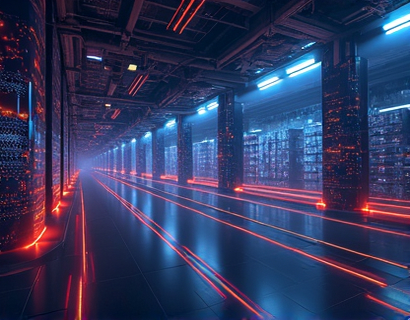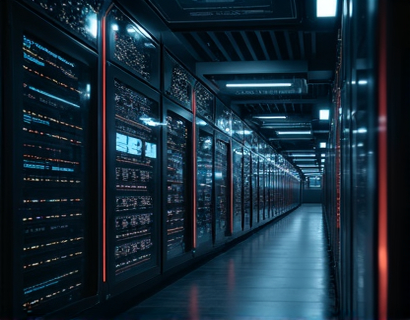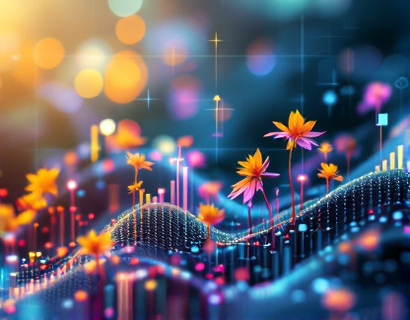Aquaculture Business Software: Revolutionizing Operations and Resource Management for Industry Leaders
In the rapidly evolving world of aquaculture, business owners and managers face unique challenges that require innovative solutions to stay competitive. The integration of advanced software solutions has emerged as a pivotal strategy to streamline operations, boost productivity, and optimize resource management. This article delves into the transformative impact of aquaculture business software, highlighting how it revolutionizes the industry by providing essential tools for success.
Understanding the Importance of Software in Aquaculture
The aquaculture industry, like many others, is data-driven. Effective management relies on accurate data collection, analysis, and utilization. Traditional methods of record-keeping and management are often time-consuming, prone to errors, and difficult to scale. Aquaculture business software addresses these issues by automating routine tasks, providing real-time insights, and facilitating better decision-making. For industry leaders, adopting such software is not just a convenience but a necessity to maintain efficiency and competitiveness.
Key Features of Aquaculture Business Software
Modern aquaculture business software encompasses a wide range of features designed to cater to the specific needs of the industry. These include:
- Inventory Management: Tracking and managing stock levels of feed, fish, and other supplies to prevent overstocking or stockouts.
- Production Scheduling: Optimizing the timing and processes of breeding, feeding, and harvesting to maximize yields and minimize costs.
- Health Monitoring: Monitoring the health of aquatic populations and managing disease outbreaks with detailed records and alerts.
- Financial Management: Managing budgets, costs, and revenues to ensure financial health and profitability.
- Environmental Monitoring: Tracking water quality parameters and ensuring compliance with regulatory standards.
These features collectively contribute to a more organized, efficient, and sustainable aquaculture operation.
Streamlining Operations
One of the most significant benefits of aquaculture business software is its ability to streamline operations. By automating routine tasks, managers can focus on strategic planning and growth initiatives. For instance, inventory management ensures that feed and other supplies are always available when needed, reducing downtime and associated costs. Production scheduling optimizes the growth cycle of aquatic species, leading to higher productivity and better resource utilization. This level of operational efficiency is crucial for industry leaders who must manage large-scale operations.
Moreover, integrated systems allow for seamless communication between different departments, such as production, finance, and quality control. This integration reduces the risk of miscommunication and errors, further enhancing overall efficiency.
Boosting Productivity
Productivity in aquaculture is directly linked to the health and growth of aquatic populations, as well as the efficiency of operational processes. Advanced software solutions provide tools that directly contribute to these areas:
Firstly, health monitoring features enable early detection and management of diseases, reducing mortality rates and ensuring a healthy stock. This not only improves the survival rate of aquatic species but also enhances their growth, leading to higher yields.
Secondly, production scheduling software helps in optimizing feeding and breeding cycles, ensuring that resources are used effectively and that the growth rate of aquatic species is maximized. This results in faster time-to-market and higher profitability.
Lastly, automated reporting and analytics tools provide insights into various aspects of the operation, allowing managers to identify bottlenecks and areas for improvement. These insights drive continuous improvement and innovation, further boosting productivity.
Optimizing Resource Management
Resource management is a critical aspect of sustainable aquaculture. Effective management of water, feed, and energy resources not only reduces costs but also minimizes environmental impact. Aquaculture business software plays a vital role in this area:
Water quality monitoring is a prime example. By continuously tracking parameters such as pH, temperature, and oxygen levels, software can alert managers to any deviations from optimal conditions. This proactive approach ensures that water quality is maintained, reducing the risk of disease outbreaks and improving overall fish health.
Feed management is another crucial area. Advanced software can calculate the optimal feed quantities based on the growth stage and size of the aquatic population, preventing overfeeding and waste. This not only saves costs but also reduces environmental pollution.
Energy management features help monitor and optimize the use of energy resources, such as pumps and aerators, leading to significant cost savings and a smaller carbon footprint.
Enhancing Decision-Making
Data-driven decision-making is a cornerstone of modern business management, and aquaculture is no exception. Aquaculture business software provides comprehensive analytics and reporting tools that offer valuable insights into various operational aspects:
Firstly, financial reports help managers understand revenue streams, cost structures, and profit margins. This information is crucial for making informed financial decisions, such as investing in new equipment or expanding operations.
Secondly, production analytics provide detailed insights into growth rates, mortality rates, and other key performance indicators. These insights enable managers to adjust their strategies to improve outcomes.
Thirdly, environmental reports ensure compliance with regulatory standards and help in assessing the environmental impact of operations. This is increasingly important as consumers and regulators demand more sustainable practices.
Scalability and Flexibility
As aquaculture businesses grow, their software needs must evolve to support increased complexity. Modern aquaculture business software is designed to be scalable and flexible, accommodating the unique requirements of operations of all sizes. Whether a small-scale farm or a large industrial facility, the software can adapt to meet specific needs.
Scalability ensures that as the business expands, the software can handle increased data volumes and more complex processes without compromising performance. Flexibility allows for customization of workflows and reporting to fit the specific practices and regulations of different regions and operations.
User-Friendly Interfaces
For software to be truly effective, it must be user-friendly and accessible to all levels of staff. Advanced aquaculture business software is designed with intuitive interfaces that simplify complex processes. This reduces the learning curve and ensures that employees can quickly become proficient in using the system.
Training and support are also critical components. Reputable software providers offer comprehensive training programs and ongoing support to help users maximize the benefits of the system. This ensures that the software is not just a tool but a partner in the success of the aquaculture business.
Case Studies and Success Stories
Several industry leaders have successfully implemented aquaculture business software, achieving significant improvements in their operations. For example, a large-scale salmon farm in Norway reported a 15% increase in productivity and a 10% reduction in feed costs after implementing an integrated management system. The software's real-time monitoring and analytics capabilities allowed the farm to optimize feeding schedules and detect health issues early, leading to better outcomes.
Another example is a shrimp farm in Thailand that used advanced inventory management to reduce waste and improve supply chain efficiency. The farm saw a 20% reduction in inventory costs and a 15% increase in product quality, directly contributing to higher customer satisfaction and market share.
These success stories underscore the transformative potential of aquaculture business software, demonstrating its ability to drive tangible results and sustainable growth.
Future Trends in Aquaculture Software
The aquaculture industry is continuously evolving, and so is the software designed to support it. Future trends include:
- Integration with IoT Devices: Incorporating Internet of Things (IoT) devices for real-time data collection on water quality, fish health, and environmental conditions.
- Artificial Intelligence and Machine Learning: Utilizing AI and ML to predict trends, optimize processes, and automate decision-making.
- Cloud-Based Solutions: Moving to cloud-based platforms for enhanced accessibility, collaboration, and data security.
- Sustainability Metrics: Developing tools to measure and report on sustainability metrics, aligning with global environmental goals.
These advancements will further enhance the capabilities of aquaculture business software, providing even more value to industry leaders.
Conclusion
In conclusion, aquaculture business software is a game-changer for industry leaders looking to streamline operations, boost productivity, and optimize resource management. By leveraging advanced tools and insights, managers can make informed decisions, improve efficiency, and achieve sustainable growth. As the industry continues to evolve, embracing these technological solutions will be essential for staying competitive and successful.










































